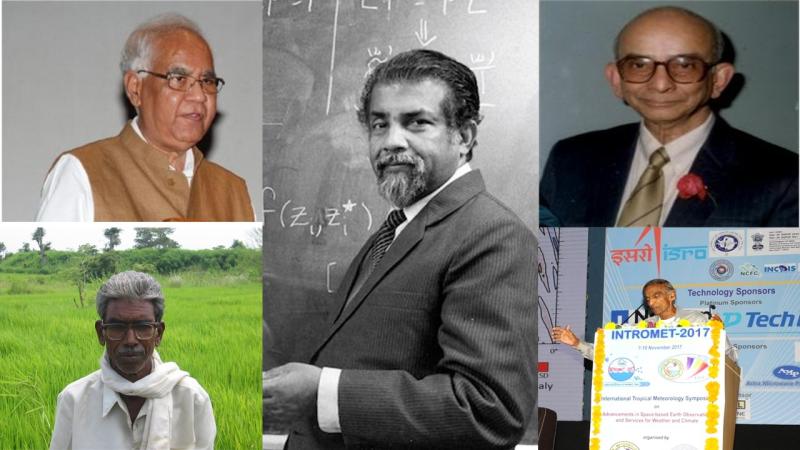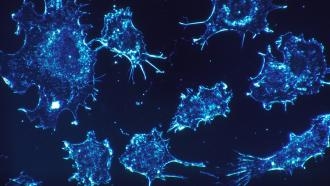
As the curtain falls on 2018, here is a tribute to those great Indian scientists and innovators who died in the year. These eminent people contributed to various fields of science and helped put India in the frontiers of global scientific advancements. This is in no way an exhaustive list, but it is an effort to bring to the fore the achievers who have left an indelible mark behind.
Prof. Baldev Raj

Prof. Baldev Raj [Image credits: National Institute of Advanced Studies]
A man of vast experience and varied interests, Prof. Baldev Raj was the Director of National Institute of Advanced Studies, Bengaluru. In his illustrious career, he worked on a vast array of subjects ranging from material science and nuclear science to medical technologies and cultural heritage. He also served as the Former Director of Indira Gandhi Centre for Atomic Research (IGCAR), Kalpakkam, Tamil Nadu. His eminence within the academic faction earned him a fellowship in all four academies of science and engineering in the country. A Padma Shri awardee, Prof. Raj was a wonderful educator and an inspiration to hundreds of students who studied under his guidance.
Gurucharan Singh Kalkat
The harbinger of the Green Revolution to the state of Punjab, Gurcharan Singh Kalkat was an agricultural scientist and the Founder Chairman of the Punjab State Farmers Commission. He also served as the Vice Chancellor of Punjab Agricultural and is largely credited for bringing in modern practices of agriculture in the state. He also worked with the Nobel Laureate Norman Borlaug, an American agronomist, on high-yielding wheat varieties. Recognising his contributions to agriculture in the country, he was awarded the Padma Shri and the Padma Bhushan awards.
T.N. Krishnamurthi

Emeritus Prof. T N Krishnamurti, Florida State University, USA delivering a Plenary Talk. [Image credits: ISRO]
A well-known meteorologist, Dr. Tiruvalam Natarajan Krishnamurti forever changed the way atmospheric scientists understand the importance and impact of tropical cyclones and forecast the seasonal/intra-seasonal tropical atmospheric phenomena. Krish, as he was popularly called, has legendary contributions to the field of tropical meteorology and numerical weather prediction. He was a Professor emeritus at Florida State University and a former Professor at the University of California, Los Angeles. In recognition of his contributions, he was awarded the Carl-Gustaf Rossby Research Medal by the American Meteorological Society, the International Meteorological Organization Prize by the World Meteorological Organization and the Sir Gilbert Walker Gold Medal by the Indian Meteorological Society.
EC George Sudarshan

E C George Sudarshan [Image Credits: University of Texas, Austin]
Ennackal Chandy George Sudarshan was an Indian theoretical physicist known for his varied contributions to the field of physics, philosophy and religion. As a student, he created the V-A theory of weak force, that helped better understanding of the weak and electromagnetic interactions, subsequently playing a role in the Nobel-winning work of Steven Weinberg, Abdus Salam and Sheldon Glashow. He worked with Roy Glauber on the Glauber-Sudarshan P representation—a quantum mechanical description of light that would become the foundation of a new field called quantum optics. Glauber was awarded the Nobel Prize for this work. He is also credited for proposing the existence of tachyons, particles that would violate Einstein's theory of relativity by travelling faster than the speed of light. Prof. Sudarshan served as a Professor at the University of Texas, Professor at the Indian Institute of Science and Director of the Institute of Mathematical Sciences in Chennai. His contributions to the field of physics have won him many accolades and awards.
Dadaji Ramaji Khobragade

Dadaji Ramaji Khobragade [Image credits: NIF]
Khobragade was an Indian innovator and cultivator who invented a high-yielding variety of paddy named HMT. Born in a small village in Maharashtra and without any formal education, he succeeded in breeding the variety of paddy with traditional breeding techniques. The HMT variety had an average yield of 40 – 45 quintals per hectare with short grains, better smell and better cooking quality in comparison with the Patel 3 variety, which was used as a parent.
E S Raja Gopal

Erode Subramanian Raja Gopal was a renowned condensed matter physicist known for his work on thermodynamics, instrumentation and experimental physics. In over 250 research articles, Prof. Raja Gopal has reported significant findings in the field of electrical resistivity, defining critical points of phase transition in various forms of matter, precise measurements of conductivity in matter, and statistical mechanics. He served as a former Professor at the Indian Institute of Science, Bengaluru, an emeritus scientist at the Council for Scientific and Industrial Research (CSIR) and as former Director of the National Physical Laboratory of India. In recognition of his contributions, he was awarded the Shanti Swarup Bhatnagar Prize, one of the highest science awards in India.
[Image credits: Shanti Swarup Bhatnagar Prize]






